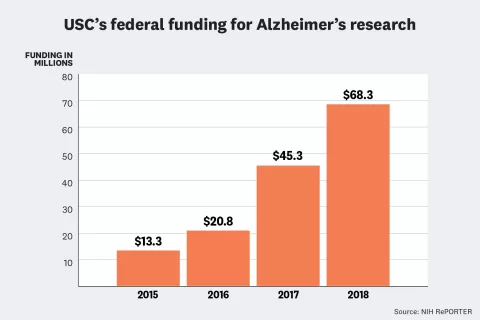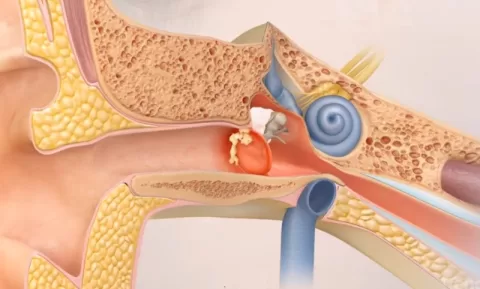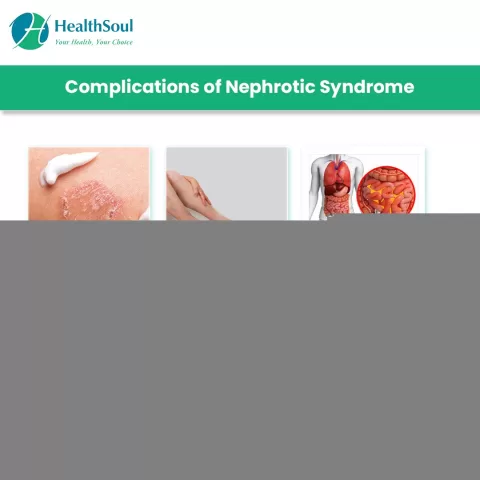Postpartum depression rates have alarmingly doubled over the past decade, highlighting a significant public health concern for new mothers. From just 9% in 2010, the diagnosis soared to 19% by 2021, pointing to a troubling trend in postpartum mental health. The increase in postpartum depression can severely impact both the mother and child, bringing to the forefront symptoms of postpartum depression such as persistent sadness and emotional instability. It’s essential to identify effective treatment for postpartum depression to ensure new parents receive the support they need during this challenging period. As the rates continue to climb, understanding the underlying factors and encouraging compassionate care is more crucial than ever.
The surge in rates of maternal mood disorders, often referred to as perinatal depression, has garnered widespread attention in recent years. This condition, which can manifest within the first year of childbirth, affects a significant portion of new mothers, leading to heightened feelings of sadness, anxiety, and emotional disconnection. As awareness grows, discussions on the importance of mental well-being during and after pregnancy are crucial in addressing the increasing incidence of these conditions. With challenges ranging from inadequate support systems to societal stigma, it’s vital to explore effective interventions and foster an environment where seeking help is encouraged. The impact of these mental health issues reverberates not just within families, but also throughout communities, making it imperative that we focus on prevention and treatment.
Rising Rates of Postpartum Depression: A Concerning Trend
The rate of postpartum depression has alarmingly increased over the past decade, doubling from 9% in 2010 to a staggering 19% in 2021, as reported by a comprehensive study from Kaiser Permanente Southern California. This increase highlights a troubling trend in maternal mental health, suggesting that more new mothers than ever are facing the challenges of mood disorders shortly after childbirth. These findings are corroborated by data from the Centers for Disease Control and Prevention, which identifies mental health conditions as the leading cause of pregnancy-related deaths in the United States. The rising statistics are not just numbers; they reflect a growing epidemic that cannot be ignored.
Several factors contribute to this increase in postpartum depression rates. Social stigma surrounding mental health care, particularly during pregnancy, discourages many women from seeking the help they need. Additionally, recent events like the COVID-19 pandemic have exacerbated feelings of isolation and anxiety among expecting mothers. Consequently, access to treatment is hindered for numerous women, leading to untreated mental health issues that could have been addressed with timely intervention. This is especially concerning given that postpartum depression can have long-lasting effects on both the mother and the infant.
Understanding Symptoms of Postpartum Depression
Postpartum depression is characterized by a range of symptoms that go beyond the typical ‘baby blues’ many new mothers experience. These symptoms can include persistent sadness, a lack of interest in activities once enjoyed, sleep disturbances, and irritability. According to the American Psychiatric Association, unlike the temporary feelings associated with baby blues, postpartum depression can severely disrupt the mother’s ability to care for herself and bond with her newborn. Recognizing these symptoms is crucial for early intervention, which can make a significant difference in outcomes for both mother and child.
Moreover, the impact of these symptoms can extend beyond the immediate postpartum period, affecting family dynamics and maternal health over time. For instance, untreated postpartum depression can lead to severe repercussions such as troubled bonding with the newborn and even thoughts of self-harm or harming the infant. Educational efforts aimed at increasing awareness about these symptoms are essential to ensure that new mothers do not suffer in silence and that they understand seeking help is not only encouraged but necessary.
Effective Treatments for Postpartum Depression
Addressing postpartum depression involves a multifaceted approach that includes psychotherapy, medication, and support systems. Antidepressants, particularly SSRIs, can effectively alleviate severe symptoms for many women, while cognitive-behavioral therapy (CBT) provides coping strategies to manage the psychological aspects of the disorder. The combination of medication and therapy often yields positive results, allowing mothers to regain control over their mental health and, by extension, their lives as caregivers. It’s essential for healthcare providers to offer empathetic support and ensure that patients feel comfortable discussing their symptoms.
The significance of early intervention cannot be overstated in the treatment process. Regular screening for postpartum depression should occur during prenatal visits and postpartum check-ups to identify individuals at risk and facilitate timely care. Education about treatment options, including non-pharmacological approaches such as exercise and peer support, can empower women to take proactive steps toward recovery. By prioritizing postpartum mental health, society can foster better outcomes for all new mothers and their families.
The Impact of Postpartum Depression on Mothers and Infants
Postpartum depression has profound implications not only for the mental health of mothers but also for the developmental outcomes of their infants. Studies have shown that untreated postpartum depression can result in poor mother-infant interactions, potentially leading to attachment issues and developmental delays in the child. Furthermore, babies born to mothers who are struggling with postpartum depression may also experience adverse effects, such as low birth weight and preterm birth. These intertwined challenges underscore the urgent need for effective interventions to protect both maternal and child health.
The cycle of impact continues as postpartum depression can hinder a mother’s ability to care for her baby, which affects overall family dynamics. It can lead to increased stress for partners and siblings, often contributing to a strained home environment. Consequently, addressing postpartum mental health is not solely a personal issue—it is a societal concern that demands collective action. It is vital for communities to provide comprehensive support systems that include mental health resources, parental support groups, and educational programs to help mitigate these impacts.
Understanding Racial Disparities in Postpartum Depression
Research indicates significant racial disparities in the prevalence and impact of postpartum depression. Non-Hispanic Black and non-Hispanic White women have reported the highest rates, but the most alarming increases have been observed among Asian and Pacific Islander women and non-Hispanic Black individuals, indicating a 280% and 140% rise, respectively. These statistics highlight the necessity for culturally tailored interventions that address the unique challenges faced by diverse populations, including access to care and cultural stigmas surrounding mental health.
Addressing these disparities requires a confluence of awareness and action at both the healthcare policy and community levels. Increasing access to mental health providers who are culturally competent can help foster an environment where women from all backgrounds feel safe and understood in discussing their mental health challenges. Furthermore, community awareness initiatives can help dismantle stigmas that prevent mothers from seeking help, ensuring that every woman, regardless of her background, can access the mental health care she deserves.
Barriers to Seeking Help for Postpartum Depression
Many new mothers face significant barriers when it comes to seeking help for postpartum depression. Concerns about judgment from healthcare providers and the fear of being reported to Child Protective Services often lead mothers to remain silent about their experiences. This culture of stigma surrounding mental health issues, particularly during pregnancy, can prevent individuals from accessing the necessary support and care they need to navigate this challenging time. It’s crucial to create a supportive environment where mothers feel empowered to speak about their mental health without fear of retribution.
Additionally, the lack of adequate healthcare resources and support systems exacerbates the struggle for many women. Rural areas may lack mental health professionals skilled in postpartum care, leaving mothers isolated in their experiences. Increasing accessibility to mental health services, including telehealth options or community-based support groups, can significantly reduce these barriers. Cultivating an atmosphere of openness regarding postpartum mental health struggles is essential in fostering recovery and ensuring mothers receive the support they need.
The Role of Early Screening in Postpartum Mental Health
Early screening for postpartum depression is vital for identifying at-risk individuals before symptoms escalate. Healthcare providers should incorporate routine mental health assessments into prenatal and postnatal care to catch early signs of distress. By establishing a protocol for screening, healthcare systems can facilitate timely interventions that can significantly improve maternal mental health outcomes. Identifying women at risk allows for tailored support systems that can mitigate the effects of postpartum depression before they impact the mother-child relationship.
Moreover, continuous monitoring of mothers after childbirth is essential to ensure their mental well-being is prioritized. Regular follow-ups can encourage women to discuss any emerging concerns regarding their mental health without feeling stigmatized. This proactive approach not only addresses immediate needs but also fosters long-term mother-infant bonding and familial stability. The importance of early intervention in reducing the prevalence of postpartum depression cannot be understated and must become a standard practice in maternal healthcare.
Community Support as a Protective Factor Against Postpartum Depression
Community support plays a crucial role in mitigating the risks associated with postpartum depression. Building strong support networks, including family, friends, and peer support groups, can provide new mothers with the emotional and practical help they need during the vulnerable postpartum period. These networks can offer reassurance, validate feelings, and create a safe environment where mothers can share their struggles openly. By fostering strong community connections, we can help alleviate isolation and reduce symptoms associated with postpartum mental health conditions.
Furthermore, community programs that offer educational resources about postpartum depression can empower mothers to recognize the signs in themselves and others. Workshops, support groups, and outreach initiatives can equip individuals with the tools they need to navigate mental health challenges constructively. Schools, workplaces, and healthcare facilities can all play a part in promoting mental health awareness and building networks of support. Collectively, these efforts not only provide immediate help but also contribute to a cultural shift toward greater mental health acceptance and support.
Hope and Recovery: Overcoming Postpartum Depression
Despite the alarming rise in postpartum depression cases, there is hope for recovery and improvement. Timely intervention through appropriate treatment can lead to significant improvements in maternal mental health, allowing mothers to reclaim their lives as active caregivers and loving parents. Personal testimonies, like that of a woman who embraced therapy and medication, demonstrate that recovery is achievable. With comprehensive support and the right resources, women can overcome postpartum depression and thrive in their roles, benefiting themselves and their families altogether.
The journey to recovery begins with recognizing the need for help and finding the courage to seek treatment. Support from healthcare professionals, family, and the community plays a pivotal role in this process. By fostering an understanding that postpartum depression is a treatable condition, we can encourage more mothers to seek help and support one another. Together, we can build a resilient framework that nurtures maternal mental health, allowing new mothers to flourish and positively impact future generations.
Frequently Asked Questions
What are the current postpartum depression rates among new mothers?
The postpartum depression rates among new mothers have significantly increased from 9% in 2010 to 19% in 2021, indicating a doubling of cases over the last decade. This alarming trend reflects a broader concern about postpartum mental health and the need for effective treatment.
How have the rates of postpartum depression changed over the past decade?
Rates of postpartum depression have doubled in the last decade, increasing from approximately 9% to 19%. This rise underscores the importance of addressing the symptoms of postpartum depression and ensuring new mothers receive the proper mental health support.
What are the key symptoms of postpartum depression?
Symptoms of postpartum depression typically include persistent sadness, lack of interest in activities, changes in eating or sleeping patterns, and excessive irritability or crying. Recognizing these symptoms early can help in seeking treatment for postpartum depression.
What treatments are available for postpartum depression given the rise in rates?
Treatment for postpartum depression may include therapy, medication such as antidepressants, and support groups. Early intervention is crucial, especially given the doubling of postpartum depression rates observed in recent studies.
What factors might explain the increase in postpartum depression rates?
The increase in postpartum depression rates may be attributed to various factors, including the challenges of accessing mental health care, societal stigma, the effects of the COVID-19 pandemic, and changes in maternal health dynamics.
What is the impact of untreated postpartum depression on mothers and their children?
Untreated postpartum depression can severely impact a mother’s overall health and hinder bonding with their baby. It also elevates risks for the baby, including preterm birth, low birth weight, and developmental challenges.
Which demographics are most affected by rising postpartum depression rates?
The rising postpartum depression rates have affected all demographics, with non-Hispanic Black and non-Hispanic white women showing the highest rates. Notably, the largest increases were seen among Asian and Pacific Islanders and non-Hispanic Black individuals.
Why is it important to screen for postpartum depression early?
Early screening for postpartum depression is vital to catch symptoms early, which can lead to timely treatment and improve outcomes for mothers and their babies, particularly in light of the doubled rates seen in recent years.
| Key Point | Details |
|---|---|
| Increase in Diagnosis | Postpartum depression rates increased from 9% in 2010 to 19% in 2021. |
| Symptoms | Persistent sadness, lack of interest, eating/sleep disturbances, irritability. |
| Impact of COVID-19 | Pandemic made accessing mental health care more difficult. |
| Affected Demographics | Highest rates among non-Hispanic Black and non-Hispanic White women; significant increases in Asian/Pacific Islander and Black populations. |
| Untreated Effects | Can lead to poor parental health, bonding issues, and risks for the baby. |
| Treatment Hope | Timely identification and treatment can significantly improve outcomes. |
Summary
Postpartum depression rates have alarmingly doubled over the last decade, reflecting a growing public health concern. A study indicated that the diagnosis rate soared from 9% in 2010 to 19% by 2021, making it imperative to address this issue. The increase in postpartum depression incidences not only highlights the critical need for improved mental health care access but also raises awareness about the serious implications that untreated depression can have on new mothers and their infants. With effective screening and timely treatment, there is hope for those affected by postpartum depression to regain their health and well-being.
The content provided on this blog (e.g., symptom descriptions, health tips, or general advice) is for informational purposes only and is not a substitute for professional medical advice, diagnosis, or treatment. Always seek the guidance of your physician or other qualified healthcare provider with any questions you may have regarding a medical condition. Never disregard professional medical advice or delay seeking it because of something you have read on this website. If you believe you may have a medical emergency, call your doctor or emergency services immediately. Reliance on any information provided by this blog is solely at your own risk.








